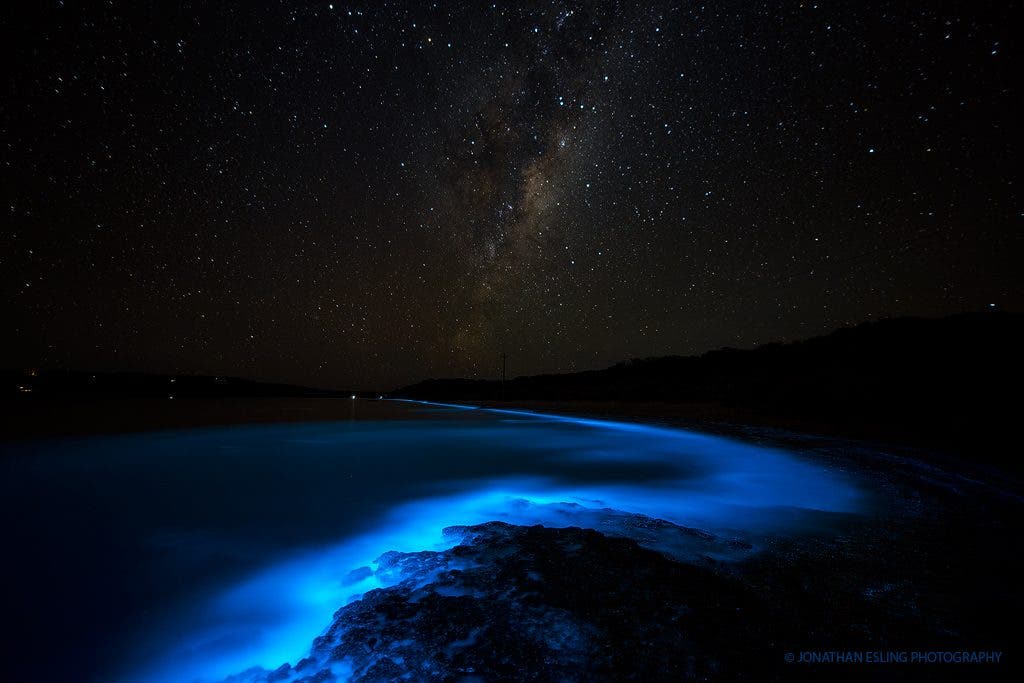Imagine yourself being able to surf at night with waves that aren’t only breathtaking but also have an amazing glow. Well, that’s possible every few years along the coast of southern California.

Image credits Jonathan Esling.
Images were recently captured at beaches in California, where the night-time waters can be seen glowing bright blue. While this has happened before, locals say this year’s phenomenon is special thanks to historic rains that have hit the region and created algal blooms.
The bright blue color of the waves is created by blooming microscopic plants called phytoplankton. The organisms collect on the water’s surface during the day to give the water a reddish-brown hue, known as the red tide. By night, the algae put on a light show, dazzling most brightly in turbulent waters.
#Bioluminescence brings glowing neon waves to surfers in Southern California. pic.twitter.com/mihX7Yfrun
— euronews (@euronews) May 4, 2020
The bioluminescence is a chemical reaction on a cellular level within the algae caused by the motion of the waves, according to Scripps Institution of Oceanography Professor Peter J. Franks, who calls the phytoplankton “my favorite dinoflagellate.”
“Why favorite?” Franks wrote in an email Q&A posted on the blog Deep-Sea News. “Because it’s intensely bioluminescent. When jostled, each organism will give off a flash of blue light created by a chemical reaction within the cell. When billions and billions of cells are jostled — say, by a breaking wave — you get a seriously spectacular flash of light.”
The algae blooms have been spotted this year at several beaches in the south of California, including Newport Beach, Hermosa Beach, and Dockweiler state beach. Surfers and many others intrigued by the phenomenon have approached the beaches in the last few weeks to see the glowing waves for themselves.
San Diego, literally magical? You be the judge. #bioluminescence pic.twitter.com/DCOdyY8P37
— Tim Fallon, PhD (@photocyte) April 28, 2020
California has implemented social distancing measures due to the coronavirus epidemic, but people can still visit its beaches. However, they must maintain a 1.8-meter distance between themselves and others. Swimming, surfing, kayaking, and paddleboarding are still allowed.
Dale Huntington, a 37-year-old pastor, got up at 3am after beaches reopened to surf the waves. “I’ve been surfing for 20 years now, and I’ve never seen anything like it”, he told The Guardian. “My board left a bioluminescent wake. There were a few of us out there and we were giggling, grown men shouting and splashing around like kids.”
Researchers at the Scripps Institution of Oceanography at UC San Diego, who study the phenomenon, said the glow shows are most lively at least two hours after sunset. They don’t know exactly how long the phenomenon will last this year. Red tides have been observed since the early 1900s and can last from a few days to a couple of months.









